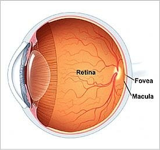Part of the weekly homework assignment is in WebAssign, and part will be done on paper and handed in in class.
NOTE: The homework will be scanned to guard against lost papers. As a result it is very important that you DO NOT STAPLE OR ATTACH YOUR PAGES IN ANY WAY. If you do so, the scanner may destroy them. Also, if you have torn your pages out of a spiral bound notebook, please remove the performations.
The WebAssign homework is due on Friday at 9 PM and the paper homework is due at the beginning of the last lecture of the week.
Please note that WebAssign has some quirky rules for what can be entered where. If it is not accepting your answer check out: Answers that cannot be understood. Please follow the instructions for the problems that are given in the WebAssign environment. The links below are to public forms of the problem and may not include specialized WebAssign instructions.
You will be asked to do 3-5 challenging problems including estimations, explanations, essay questions, worked out problems, and even some challenging multiple choice questions. You are encouraged to work on these with friends. The course center is a good space to work together and get feedback from a TA or Professor. CLICK FOR THE COURSE CENTER SCHEDULE.
You have to write up your solutions independently. Be careful: If two or more submitted answers are essentially identical, neither will receive credit. If your solution is essentially identical to one found on the web, you will receive no credit and all your previous answers will be searched to see if they are also copied. Credit for those found to be copied will be removed.
Some of the WebAssign problems (mostly multiple-choice) will be computer-graded, some will be graded for correctness by a human, and some won't be graded (and you'll just get points for completion). However, we won't tell you ahead of time which problems will be graded, so you'll have to do your best on all of them! For the problems that are only graded for completion, make sure you look at the solution afterwards (posted on ELMS); don't let your perfect score on that problem (based on completion) fool you into thinking you did it correctly. (Maybe you did do it correctly, but it's good to confirm that.)
So you got your homework back and you see (especially on ones you lost points) some funny letters, like some kind of code. Here's what those letters mean. The burden of figuring out where you went wrong is on your shoulders, but if the code isn't helping you, bring your confusion to the Course Center.
Previous semesters of students have cried out for practice problems, so we are starting a page for that here. While we don't think that mastering these will prove anything about your knowledge of physics, or your ability to "think like a physicist," we do acknowledge that these can build your math skills for use on real problems. (Do not expect that exam or quiz questions will look like these!) We will not grade these, but you can bring up questions about these practice problems in Course Center hours or on the discussion board on ELMS.

